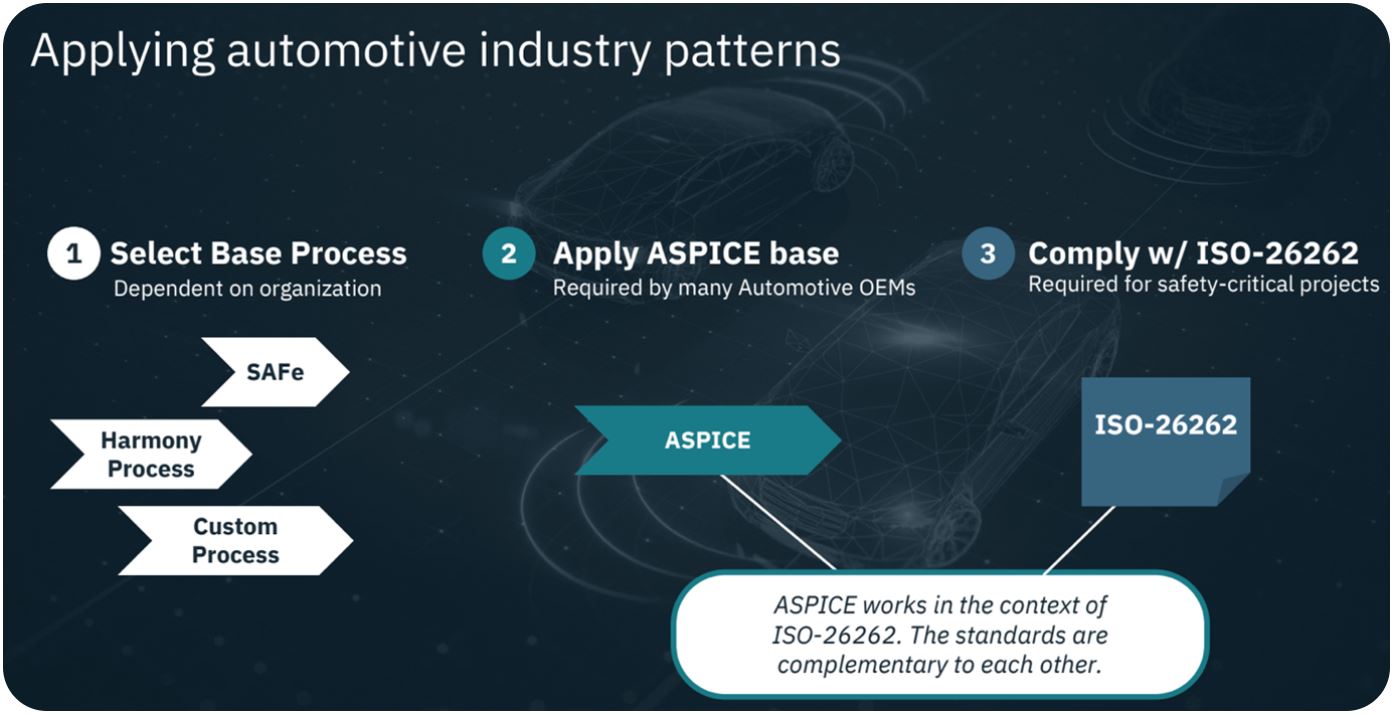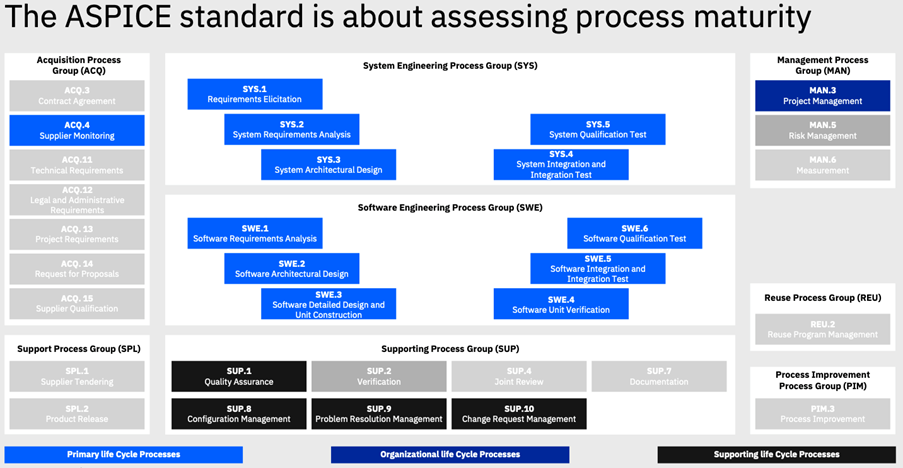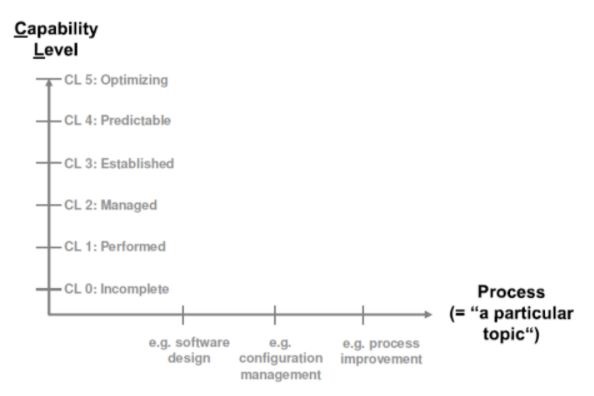ASPICE
About ASPICE
ASPICE stands for Automotive Software Process Improvement and Capability Determination and is a specialized variant of the international Standard also known as ISO/IEC 15504 (SPICE). Due to maturity guidelines and assessment, it is also an automotive equivalent of CMMI.
The purpose of Automotive SPICE is to evaluate the performance of the development processes of OEM suppliers in the automotive industry. ASPICE works in context of ISO-26262. The standards are complementary to each other.
The main focus of ASPICE is Software. It has two dimensions of process model and capability level.
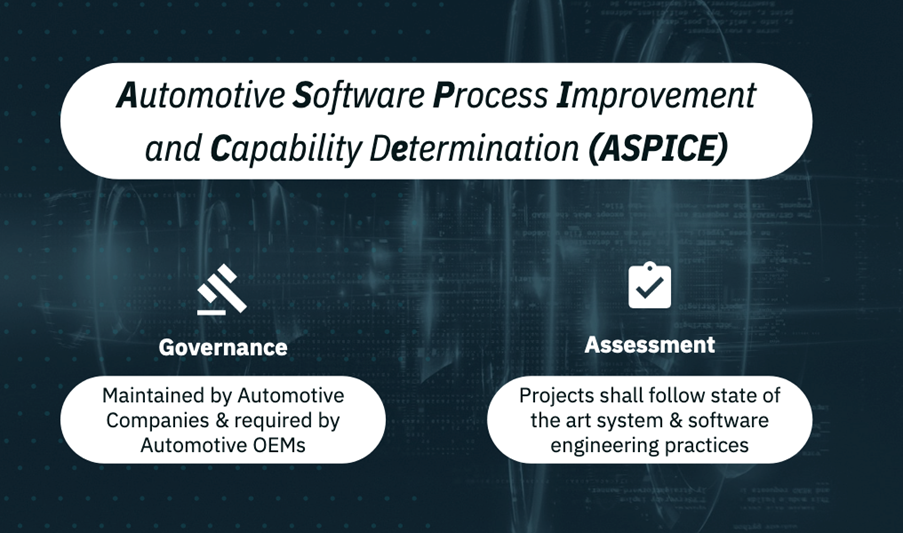
ASPICE levels and compliance
The Scale in ASPICE is from Level 0 to 5. The goal is to reach a certain maturity level.
But to become ASPICE compliant as OEM you must reach at least Level 3.
Your process needs to map to the PRM Process assessed using the Process Assessment Model (PAM) Capability.
You need to understand the PA rules if you want to get Capability Level 3
ASPICE level definitions
- Level 0 means your processes can achieve the work products ASPICE defines at most partially.
- Level 1 means you largely are able to produce the specified work products. You might have some gaps, but you get through the entire V-model.
- Level 2 means you are fully capable of producing the work products and you can largely manage the processes by having a goal, checking progress, and reacting when at risk of missing the goal.
- Level 3 means your organization has centralized standards for how you do things, and your project follows these standards. This level is required to become ASPICE compliant.
- Levels 4 and 5 simply aim to make your organizational-processes more predictable and innovative.
Why do I need ASPICE and what is my added value?
Nowadays nearly the whole automotive industry works with special certifications to ensure that processes are monitored and Developing is improved in software-based system development. Therefore, most of the Automotive OEM´s you wish to work together will require such a certification in your company. Working with Automotive Spice Certification brings you the ability to work in a narrow circle of suppliers.
If you are interested about the latest news and facts about ASPICE, the links below will help you.
https://www.vda-qmc.de/software-prozesse/automotive-spice/
http://www.automotivespice.com/
The latest versions of Automotive SPICE® Process Assessment Model (PAM) and Process Reference Model (PRM) you can find here:
http://www.automotivespice.com/download/
For German customers there is also the official guideline of ASPICE in German language available:
http://www.automotivespice.com/fileadmin/software-download/AutomotiveSPICE_PAM_v23_DE.pdf
What can IBM and Softacus do for your ASPICE Level?
With IBM Tools you can easily become ASPICE compliant. Due to the Jazz Platform which combines several possibilities to track your progress and to safe your maturity level.
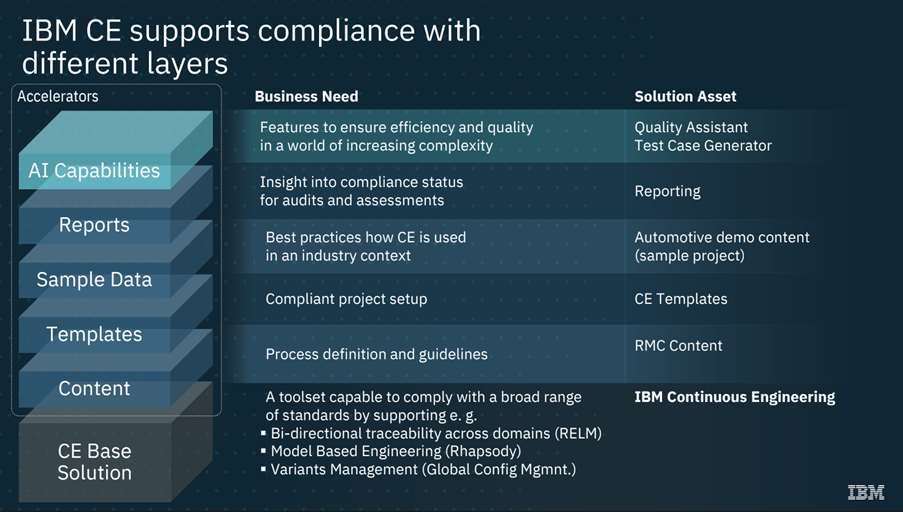
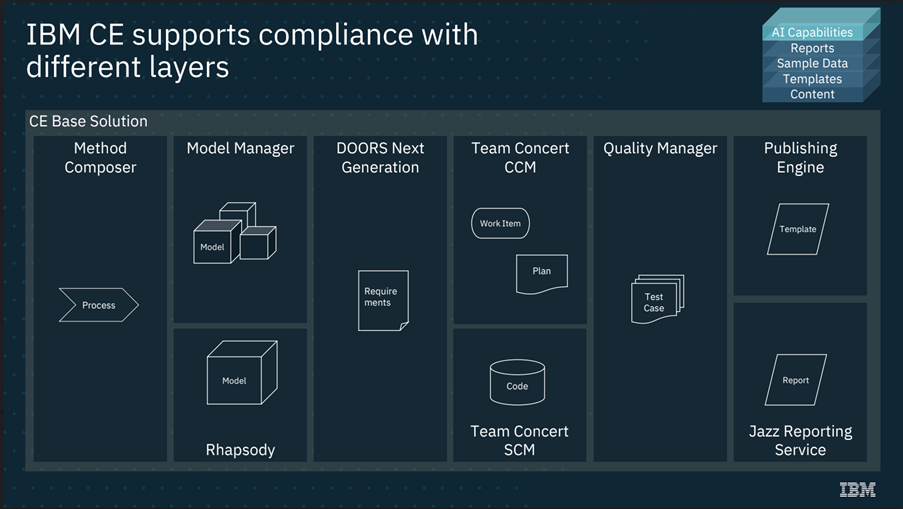
For each layer you can have an IBM Tool which gives you the possibility to make the compliance to ASPICE easy. The IBM Jazz Platform works with synchronized Solutions to make traceability and work on ASPICE compliant easily.
The picture to the right shows you with which Products you can expand your Jazz Platform to be ASPICE compliant.
The Alpha Version which is shown is kind of “basic instruments” where you only need review for example in Team Concert and Quality Manager. The Main Product is Doors Next Generation.
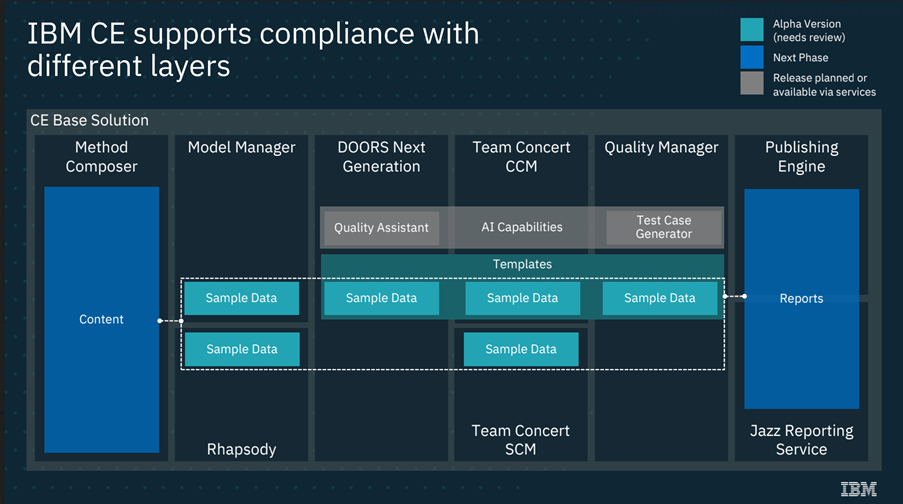
See the Videos below to understand how IBM tools will help you to be ASPICE compliant
Additional Information
See also the presentation by service expert Horst Sprengel reporting from his experience on how to understand the connection to ASPICE and how to demo this solution.
Softacus can show you first-hand how the products are used in practice and work out a solution that is best suited for you and your company according to your needs.
Our presentations are especially suited to the needs of our customers. We want you to ask us as many questions as you want so that you can convince yourself.
Contact us for additional information.

